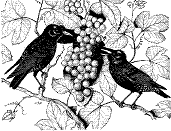Vertebrate Pest Conference: Proceedings

Vertebrate Pest Conference Proceedings: 8th (1978)
Date of this Version
3-1-1978
Document Type
Article
Abstract
This paper describes the development of a biological technique that successfully controls conifer seed damage by the deer mouse. Eleven experiments have been conducted on three study areas at the University of British Columbia Research Forest, Maple Ridge, B.C. Populations of deer mice have been monitored in all experiments with data from 56,000 trap nights. The technique involves a mixture of conifer seed (Douglas fir) with sunflower seed and oats which is uniformly distributed on logged areas in the late winter-early spring. Survival of conifer seed with these alternate foods was excellent, compared with control Douglas fir by itself, for an 8-week period during this time of year. Populations of seed-eating birds and chipmunks are not present on clearcut areas from late October to early April. In addition, deer mice are at their lowest density during the spring. Thus, the use of alternate foods with Douglas fir seed in a direct-seeding operation at the appropriate time of year will result in successful regeneration of cutover forest lands.

